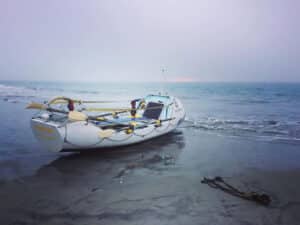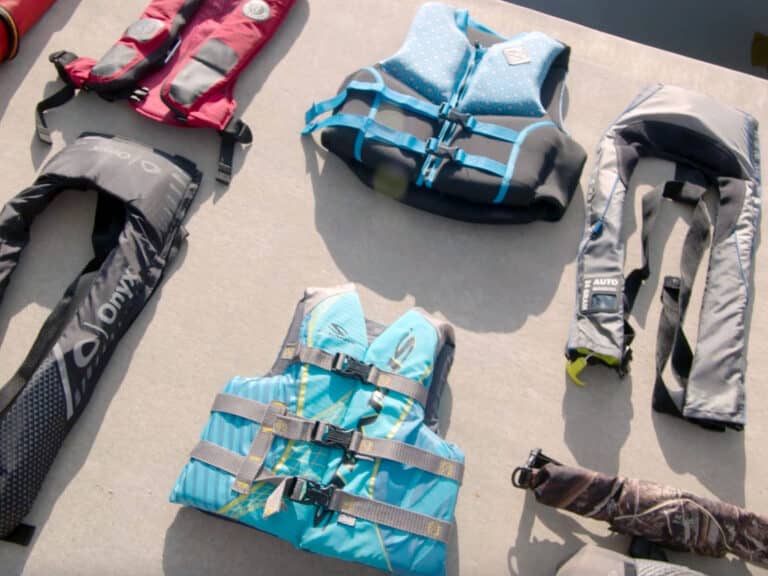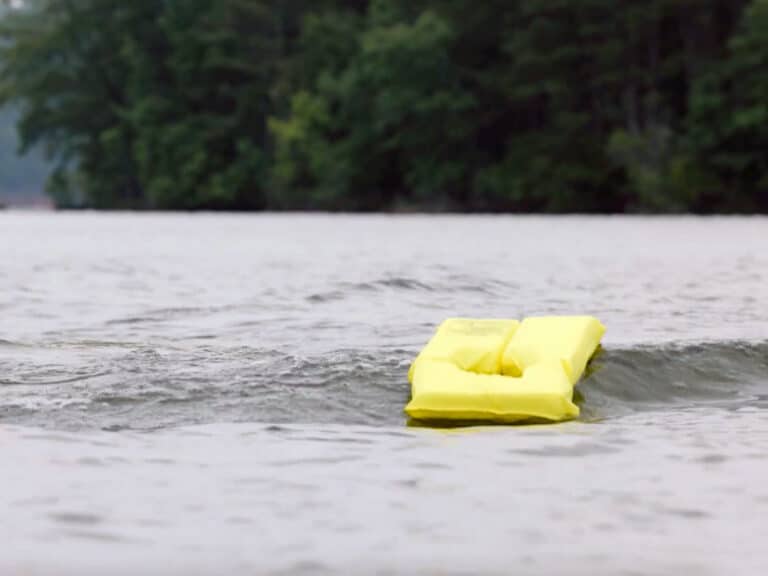
My husband and I had just traded in our Tartan 33 for a Sabre 362, and now we were getting to know all our new systems on an extended Labor Day weekend cruise through Buzzards Bay, off Massachusetts. It was our first overnighter since our delivery trip from South Amboy, New Jersey. Hadley’s Harbor, across from Woods Hole, Massachusetts, seemed to beckon to us. We anchored, and I started dinner.
In calm conditions, we enjoyed a beautiful sunset and swooping hawks. We were looking forward to a peaceful evening. The menu called for pre-cooked crab cakes that just needed to be heated up in the oven, which I hadn’t used yet. I also didn’t have a small enough baking sheet, so I used a cheap, disposable aluminum pan from the grocery store and popped dinner in the oven.
Soon, instead of the aroma of cooking crab cakes, I smelled something burning. We knew there was an issue with the plastic lampshade over the stove; the previous owner had already melted it. I turned the light off, figuring that the plastic was melting again. But the smell quickly got worse, so I opened the oven to check.
I was greeted by a thick puff of smoke and a whoosh of flame shooting out the oven door as the fresh oxygen caused whatever was smoldering in there to ignite and send smoke billowing into the cabin. I immediately slammed the door shut and yelled “Fire!” My startled husband said, “Fire?” Then he grabbed for the fire extinguisher at the nav table. I quickly shut off the gas breaker and grabbed the baking soda from the fridge. The inside of the oven was now filled with flame, but I was able to smother the fire with the baking soda before my husband had the fire extinguisher out of its clips. That humble little yellow box of baking soda had stopped the flames before they could spread-even the cherry woodwork around the oven was untouched.
Smoke had filled the boat, the crab cakes were done to a black crisp, and the aluminum pan had partly disintegrated into strings of melted goo hanging down from the oven rack. But the fire was out, and all we needed to do was open all the hatches and go topside until the smoke cleared.
There must have been some plastic in or around that pan, although I know that I’d taken the shrink-wrap off. The fire’s cause remains a mystery. In talking with other cruising friends, I found that they didn’t know that baking soda could put out a cooking fire. So for any cruiser who loves to cook, keep an extra box handy. I’ve already bought a new box. And a real pan.
Read more about handling a fire on board here.
The U.S. Coast Guard is asking all boat owners and operators to help reduce fatalities, injuries, property damage, and associated healthcare costs related to recreational boating accidents by taking personal responsibility for their own safety and the safety of their passengers. Essential steps include: wearing a life jacket at all times and requiring passengers to do the same; never boating under the influence (BUI); successfully completing a boating safety course; and getting a Vessel Safety Check (VSC) annually from local U.S. Coast Guard Auxiliary, United States Power Squadrons(r), or your state boating agency’s Vessel Examiners. The U.S. Coast Guard reminds all boaters to “Boat Responsibly!” For more tips on boating safety, visit www.uscgboating.org.








